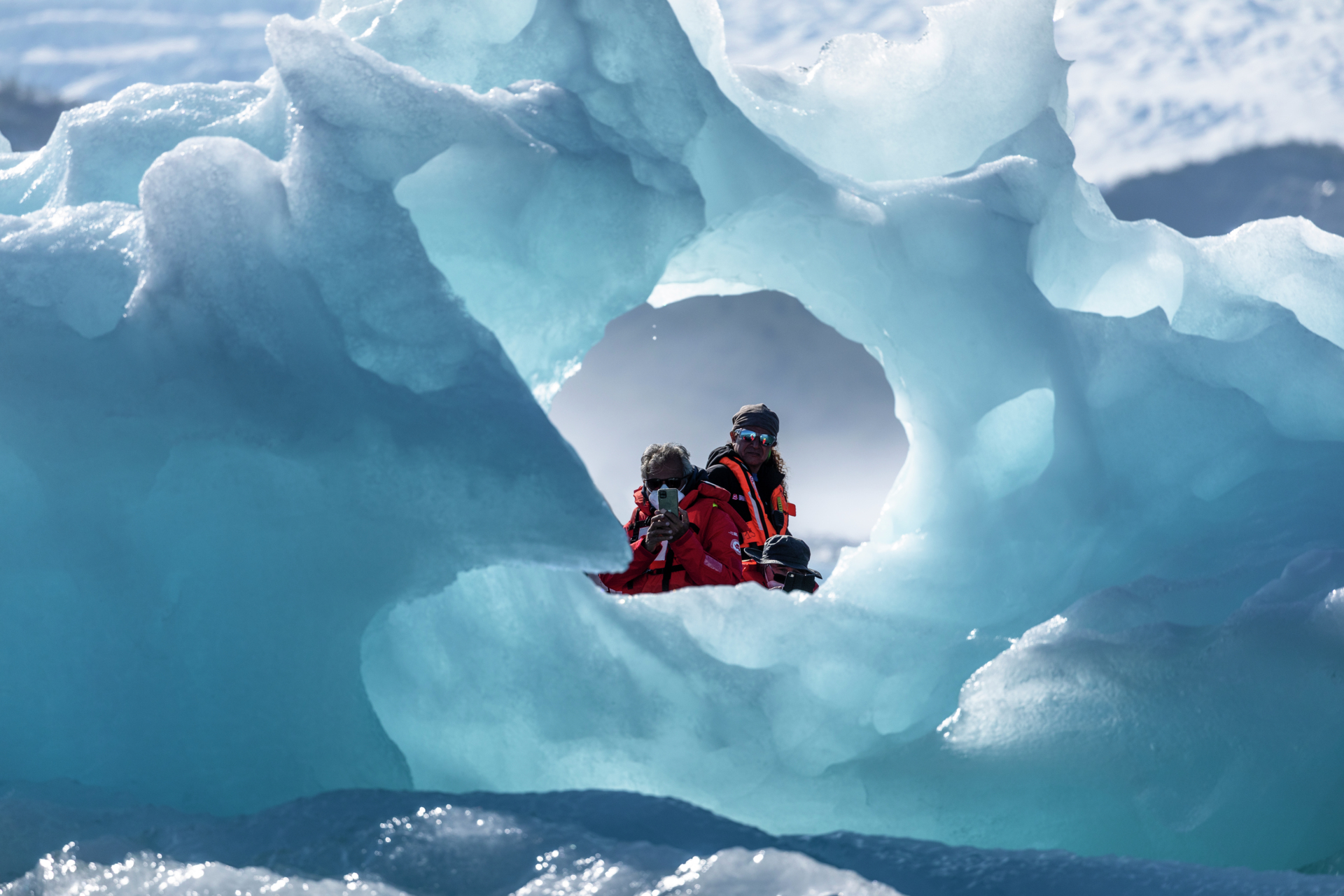Grand Expedition Cruises
Embark on the ultimate odyssey – a pole-to-pole cruise from the Arctic to Antarctica – guided by the expertise that comes from almost 125 years of expedition cruising.
Experience our planet in one epic journey
There’s nothing routine about our pole-to-pole expedition cruises. They can be as beautifully unpredictable as a breaching whale – and every bit as awe-inspiring. Feel with all your senses the variety and beauty of our world as you voyage across the hemispheres. We have pioneered exploration with learning since our first expedition cruise in 1896. Now, sail with us and explore alongside scientists and modern-day explorers who will help you to discover the humbling diversity of our precious planet as it unfurls before you, one line of latitude at a time. You’ll never see the world in the same way again.
How Long is a Grand Expedition Cruise?
Choose from trips lasting between 23 and 97 days for an adventure the likes of which you've never experienced before.
Sail from the Arctic to Antarctica in two or three months, or spend up to a month getting to know regions such as Greenland, Atlantic islands or Central or South America.
Life on Board
While the world you’re sailing through is full of adventure, life on board is refreshingly relaxed and informal. With its soothing Nordic-style décor, your ship is an oasis of calm.
A Force for Good
Our hybrid-powered ships are among the most sustainable in the world, but we do more than tread as lightly as possible in the environment. We take every opportunity to give back to the places we visit.
Puffins, caribou, sea lions, whales… Wildlife plays an important part in your expedition cruise. Scan the tundra for polar bears, hang out with sloths in Central America, or eyeball a penguin.
Explore iconic global destinations
Whether you’ve always dreamed of exploring the pristine fjords of Greenland, setting foot in Machu Picchu, or sailing the tropical Panama Canal, you’ll witness jaw-dropping scenery, and cities positively buzzing culture.
The Ultimate Odyssey: Arctic to Antarctica
Embark on a journey of scientific discovery
With cutting-edge observation equipment including powerful microscopes and underwater drones, our onboard research scientists will open your eyes to the natural wonders around you.
Grand Expedition Activities
Get hands-on, boots-wet, and face-to-face with our world through the huge range of activities available on your Grand Expedition cruise. Go wildlife watching, join a walking tour, or try whisky tasting.
Santo Antão – Spectacular Nature
Experience Santo Antão on a rigorous, full-day excursion. Enjoy a guided walk over the mountains to discover Santo Antão’s highlights and marvel at the volcanic landscape.
Bar Harbor - Gilded Age Walking Tour
A walking tour is the best way to experience this delightful area, where your guide will share the fascinating history of the area in the 19th century.
Manta and Montecristi Highlights
Visit the archaeological museum of Manta and discover Montecristi, home of the Panama hat.
* Please note that these are optional activities; an additional cost may apply.
An action-packed itinerary
For most, a Grand Expedition Cruise is a once-in-a-lifetime experience. We’ll do our very best to show you a range of wildlife spots and activities that’ll make it an unforgettable expedition.
Wildlife on Grand Expedition Cruise
Get set for one continuous wildlife watching experience! As we traverse different areas of the world, we’ll discover a spectacular variety of animals. From whales, seals and penguins in the colder climes, to the exotic fauna of the tropics, the Grand Expedition Cruise you choose will offer plenty of opportunities to get up close and marvel at the creatures of the natural world.

Sail away on a floating oasis
With our Grand Expedition cruises, you'll experience the adventure of a lifetime on fully equipped ships that are built for exploration. With an informal atmosphere, restaurants serving regionally inspired dishes, and high-quality service, you’ll develop a strong bond with your comfortable base camp at sea.
Expedition Team on Grand Expedition Cruises
Your Expedition Team are experts with many years of experience. They’ll join you while hiking, kayaking, expedition boat cruising and on shore landings, sharing their knowledge of ecology, natural history, and explaining conservation efforts as you explore. With only around 11 guests per expedition guide, you’ll enjoy a more tailored experience.

Conscious travel
As we explore, we minimise disruption to animals and ecosystems, and we ensure we leave as small a footprint as possible.